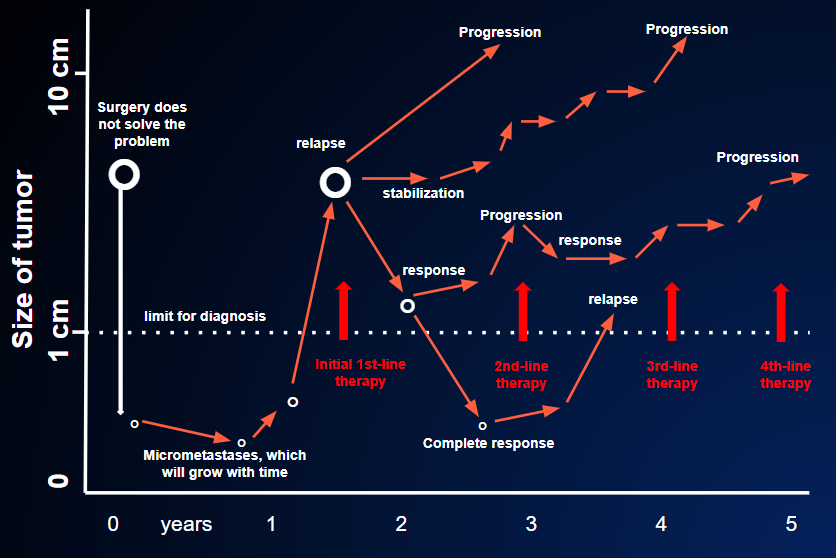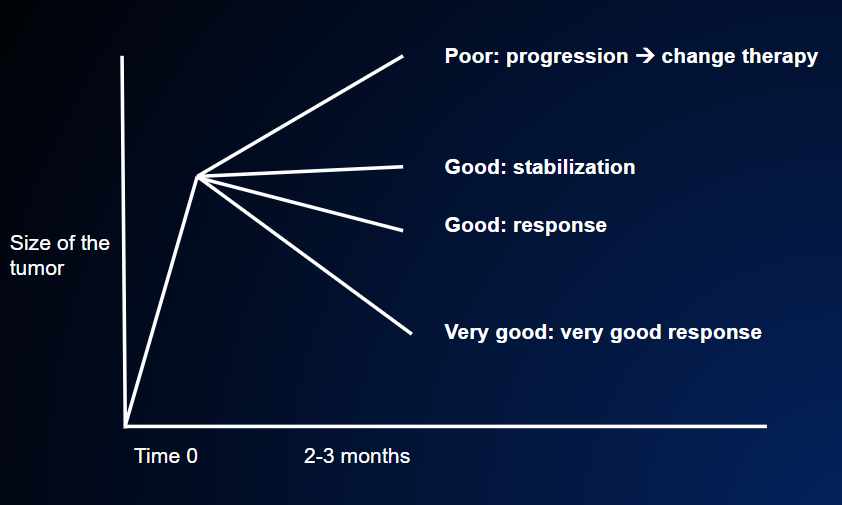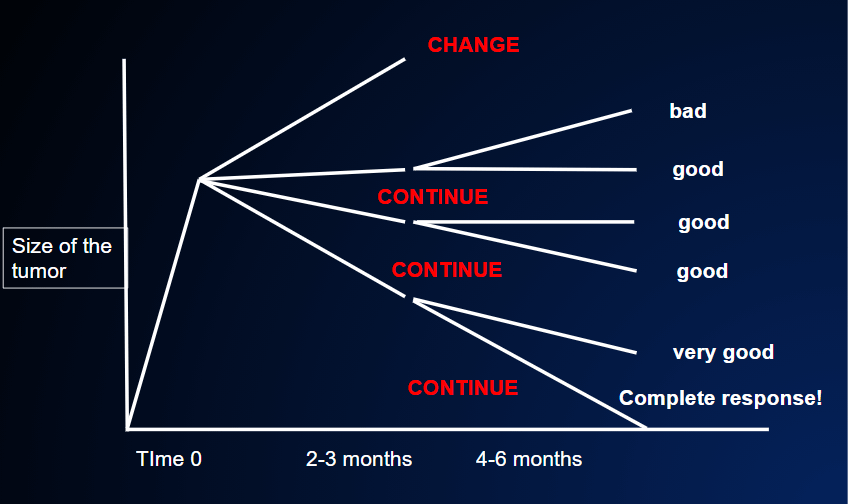About 2-3 months after the beginning of therapy, the first follow-up CT and/or other tests are performed in order to assess the effectiveness of the treatment.
If these examinations show that the metastases have stabilized or decreased in volume, it is a very good sign; before treatment, they were growing, but now they have stopped growing or have begun to shrink. In such cases, we apply the principle “don’t change a winning team”; in other words, we carry on with the same therapy. FIGURES 17,18,19



It is easy to understand what the various degrees of reduction in the size of the metastases mean; the greater the reduction, the greater the probability that a long time will pass before they begin to grow again; moreover, when they do begin to grow again, they will do so more slowly and less aggressively, thanks to the previous chemotherapy.
If, by contrast, this first assessment shows that the therapy has not been effective, and that the tumor has continued to grow, it will be necessary to change the therapy, FIGURE 19.
In short, two or three months after the beginning of treatment, the doctors can be a little more accurate in predicting what will happen in the near future. If the patient has responded to the treatment, it is highly unlikely that the disease will take a turn for the worse within the next few months; this was impossible to know before the beginning of the treatment. Indeed, the response to treatment is one of the main predictors of how things will go. If, by contrast, the cancer is seen to have progressed, the situation is decidedly more worrying, FIGURE 17.
In the last 4 years, progress in the field of research has resulted in much higher rates of response to therapy (i.e., reduction in the tumor) than in the past. Until only a few years earlier, in certain tumors the probability of achieving a response was no greater than 20%, and average life expectancy in the advanced stage was 12-24 months. Now, however, the probability of response is about 50%, and average life expectancy is 3-5 years or more.
